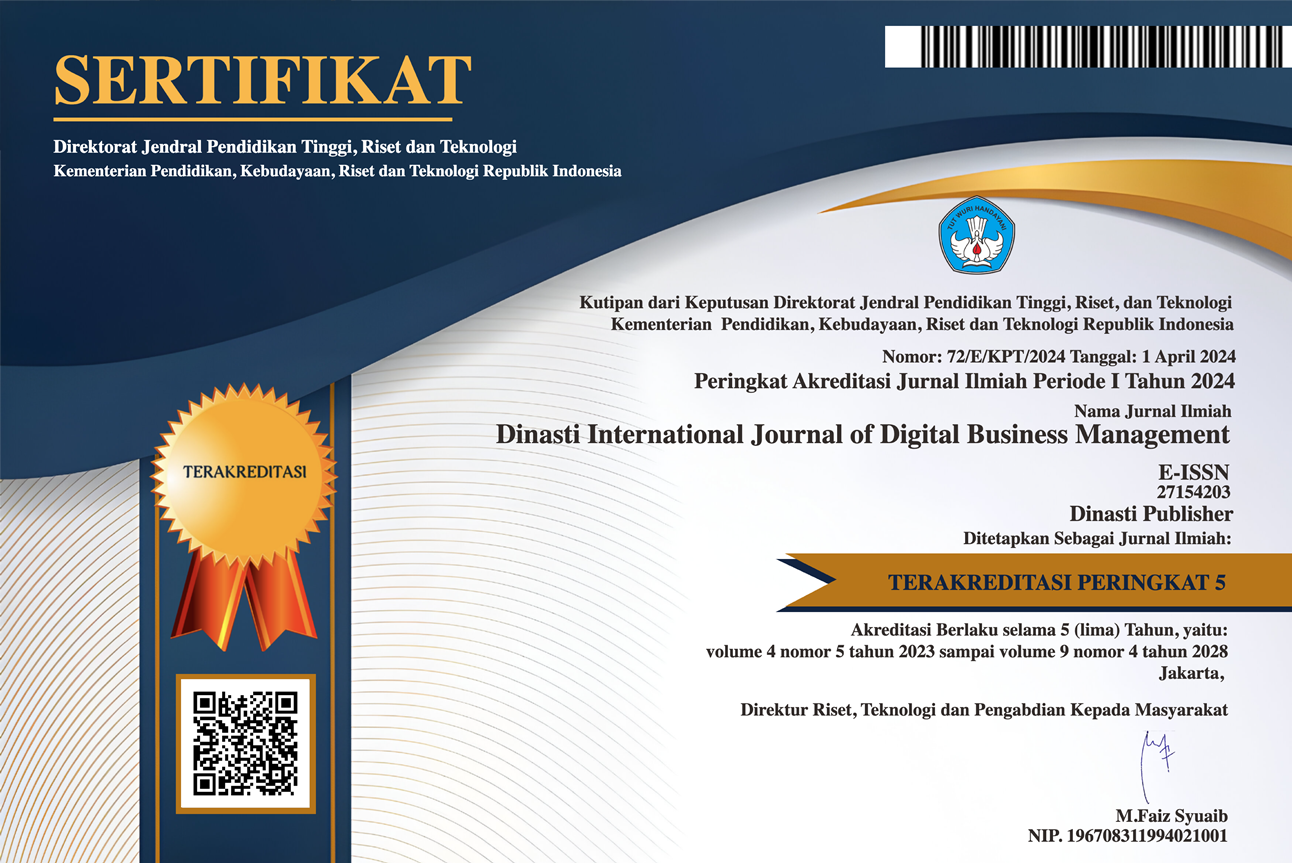Analysis of Development and Arrangement of Rapid Transit Bus in Public Transport Planning in Gorontalo City
DOI:
https://doi.org/10.38035/dijdbm.v6i1.3807Keywords:
Development and Arrangement, Transport General Bus Rapid Transit (BRT)Abstract
System transportation in particular field transport common in the city of gorontalo, is not optimal, thing This can be seen from the characteristics of people who prefer to use bentor (motor tricycles) in carrying out their daily activities compared to using public transportation. For example, the Trans Hulonthalangi BRT (Bus Rapid Transit) has not been used optimally, as well as other public transportation, because object to be researched or data source very large with cover Cluster Sampling (Sampling Area) . Sampling technique area, often used two Step that is first determine the sample area, second determine the people in the area that by sampling too, then n study this using Modeling Techniques Transportation Four Steps (four-step model), and methods collection in the form of primary data network map Street as well as transportation data general, and second secondary data collection with past survey method cross transport road. Could concluded results study this that development and arrangement bus rapid transit in planning transport general in the city of Gorontalo requires 4 (four) corridors with average bus speed 40 Km/Hr: Corridor I long route 20.2 km (PP) requires 9 vehicles with time travel 52.9 minutes, has a headway of 6 minutes and a frequency of 11 vehicles / hour. Corridor II long 9.3 km (PP) route requires 5 vehicles with time travel 26.5 minutes, has a headway of 6 minutes and a frequency of 11 vehicles / hour. Corridor III length the 16 km (PP) route also requires 5 vehicles with time travel 27.6 minutes, has a headway of 8 minutes and a frequency of 8 vehicles / hour. Corridor III length the 16 km (PP) route also requires 5 vehicles with time travel 27.6 minutes, has a headway of 8 minutes and a frequency of 8 vehicles / hour. Corridor long IV the 40 km (PP) route also requires 11 vehicles with time travel 74.8 minutes, has a headway of 6 minutes and a frequency of 11 vehicles / hour.
References
Departemen Perhubungan RI Direktorat Jenderal Perhubungan Darat. (2002). Pedoman Teknis Penyelenggaraan Angkutan Penumpang Umum di Wilayah Perkotaan dan Trayek Tetap dan Teratur, Jakarta.
Direktorat Jenderal Perhubungan Darat. (2002). Panduan Pengumpulan Data Angkutan Umum Perkotaan. Jakarta.
Keputusan Dirjen Perhubungan Darat Nomor SK.687/AJ.206/DRJD/2002 tentang Pedoman Teknis Penyelenggaraan Angkutan Umum Di Wilayah Perkotaan Dalam Trayek Tetap dan Teratur.
Morlok, E. K. (1985). Pengantar Teknik dan Perencanaan Transportasi. Jakarta: Erlangga.
Munawar, A. (2005). Dasar-Dasar Teknik Transportasi. Yogyakarta: Beta Offset.
Nasution, H.M. (2003). Manajemen Transportasi. Jakarta: Ghalia.
Novirani, D. (2007). Kajian Tarif Shuttle service Terhadap Vihicle Operation Cost Operator,Ability To Pay(ATP) Dan Willingness To Pay(WTP) Penumpang. Thesis S2 Fakultas Teknik ITB,Bandung.
Sugiyono. (2018). Metode Penelitian Kuantitatif. Bandung: Alfabeta.
Sugiyono. (2023). Statistika Untuk Penelitian. Bandung: Alfabeta.
Sukandarrumidi. (2002). Metodologi Penelitian: Petunjuk Praktis Peneliti Pemula. Yogyakarta: Fakultas Teknik, Unversitas Gajah Mada, Gadjah mada University Press.
Susanto, P. C., Arini, D. U., Yuntina, L., & Panatap, J. (2024). Konsep Penelitian Kuantitatif?: Populasi , Sampel , dan Analisis Data ( Sebuah Tinjauan Pustaka ). Jurnal Ilmu Manajemen, 3(1), 1–12. https://doi.org/https://doi.org/10.38035/jim.v3i1
Suwardi. (2000). Angkutan Umum. Surakarta: Fakultas Teknik UMS.
Warpani S. (1990). Merencanakan Sistem Perangkutan. Bandung.: ITB.
Wells, G.R. (1975). Comprhensive Transport planning. London: Charles Griffin and Company Ltd.
White, Peter. (1995). Public Transport: Its Planning, Management and Operation, Third Edition. London: UCL Press.
Wijaya, C. (2009). Makalah Perencanaan Angkutan Umum. Depok: Sipil UI
World Bank. (1986). The International World Bank For Reconstruction and Development USA.
www.google.com, Standard Pelayanan Angkutan Umum
Downloads
Published
Issue
Section
License
Copyright (c) 2024 Jhon Rindu Nainggolan, L Denny Siahaan, Adenan Suhalis

This work is licensed under a Creative Commons Attribution 4.0 International License.
Authors who publish their manuscripts in this journal agree to the following conditions:
- The copyright on each article belongs to the author(s).
- The author acknowledges that the Dinasti International Journal of Digital Business Management (DIJDBM) has the right to be the first to publish with a Creative Commons Attribution 4.0 International license (Attribution 4.0 International (CC BY 4.0).
- Authors can submit articles separately, arrange for the non-exclusive distribution of manuscripts that have been published in this journal into other versions (e.g., sent to the author's institutional repository, publication into books, etc.), by acknowledging that the manuscript has been published for the first time in the Dinasti International Journal of Digital Business Management (DIJDBM).















































